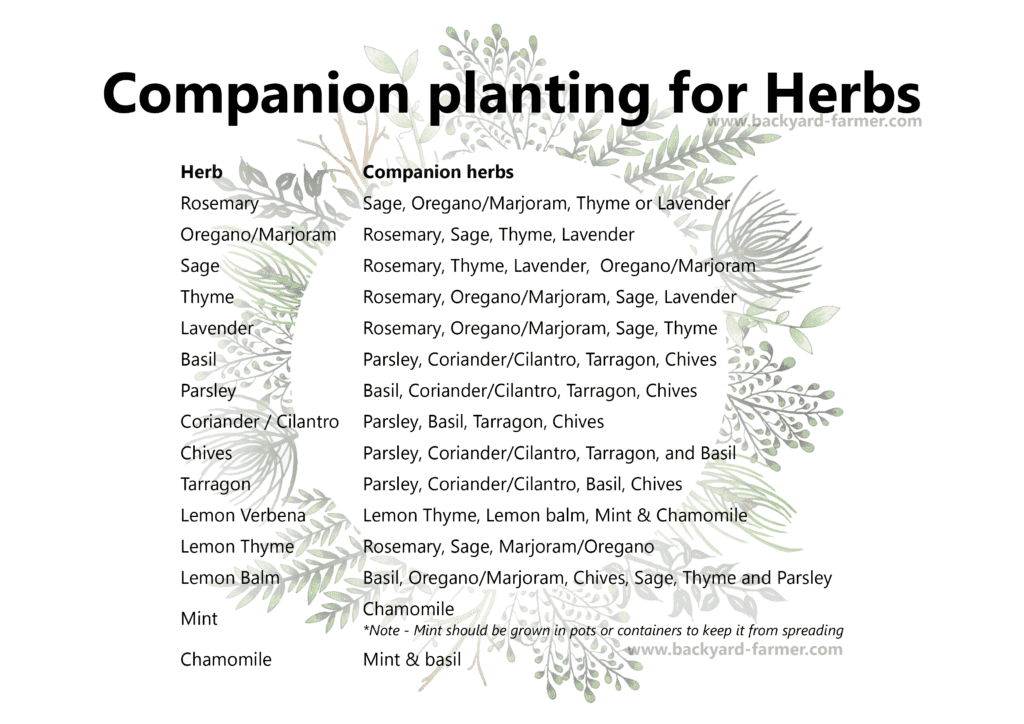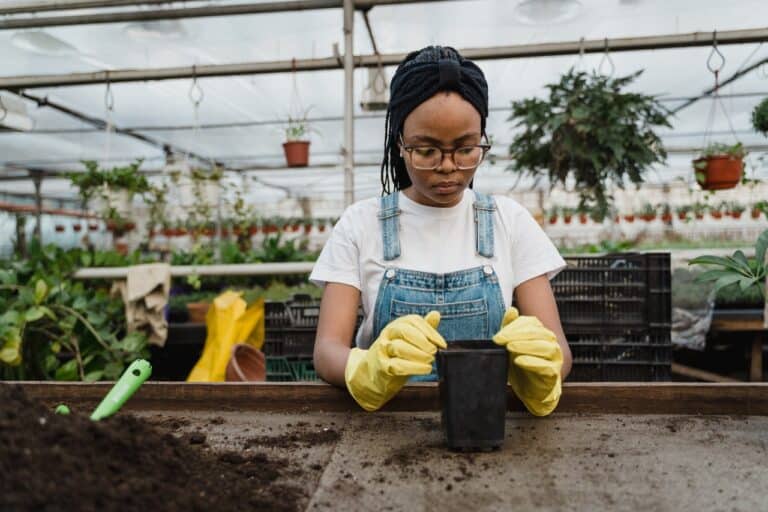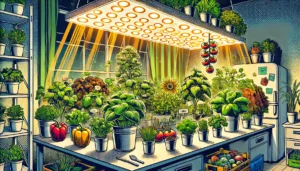How to grow a Herb Garden for beginners
This article will teach you what you need to set up a herb garden – a simple, easy and rewarding way to get into growing your food. We will look at what a herb garden is, the types of herb combinations that are common, and ideas for both indoor and outdoor herb gardens.
All guides and articles are created from experience, learning how to grow my food in suburban Britain, offering hands-on insight on tried and tested projects like this one.
Starting a herb garden is one of the most rewarding ways to kick off the gardening season. Discover our early-season herb planting journey and creative uses for shells in the garden.
Anyway, to get started on your Beginners Herb Garden project keep reading! We’re going to cover the following:
What we will cover in this article
- What is a herb garden?
- How do I create a herb garden?
- What herbs should you plant together?
- Why is a herb garden a good beginner project?
- What herbs can I grow in my herb garden?
- What can I use herbs for once harvested?
What is a Herb Garden
Herb gardens are for growing any plant with leaves, seeds, or flowers used for flavouring, food, medicine, or perfume (definitions from Oxford language) and can be grown indoors or outdoors, small or large. Herb gardens can be grown alongside vegetables or flower beds and can even provide benefits in these areas, like avoiding invasive or damaging species.
What are herb gardens used for?
You can find herb gardens everywhere and they have many uses such as being used in floral arrangements or even to keep pests away like mosquitoes, fleas and flies! Some herbs like lavender or rosemary are great at dissuading invasive species by simply planting them in your garden borders.
Herbs make great companion plants and when used properly, they can eliminate the need for strong chemicals and pesticides.
Equally, some herb gardens are used for viewing pleasure, or for fragrance and aromas around gardens and parks.
How do I create a Herb Garden for beginners?
Before you run into creating a herb garden, consider a few things before you start. With an overwhelming number of different plants in the herb arena, it’s easy to get lost when deciding what to grow. Knowing what you want from your garden will help you decide what herbs to start with. For example, a culinary herb garden will have a different selection from a herb garden designed for fragrance.
Starting your herb garden early in the season can be incredibly rewarding. Discover how we planted our first seeds of the year and explored the versatility of herbs.
What types of herb gardens are there?
Indoor herb garden
An indoor herb garden is kept inside in plant pots or containers. You can use them for both culinary and aesthetic reasons. A good spot is on the windowsill, or if it’s a culinary herb garden, keep it in your kitchen to have fresh herbs ready for your latest dish.
Outdoor herb garden
An Outdoor herb garden is kept outside, either in the ground or in pots or containers. Some herbs like mint are known for taking over entire areas, and you should plant them in a pot in either internal or external herb gardens.
Outdoor herb gardens tend to be for the more hardy and perennial herbs, such as lavender and rosemary. Some herbs, like basil, are very delicate and tasty. Therefore a slug will probably eat it before you can, so you should plant it indoors.
A herb garden on your balcony
You only need a little space for a herb garden. Even the smallest outdoor spaces can grow a fair amount of fresh food if used correctly. It’s also good for your mental health to have an area surrounded by plants and nature, especially in more urban areas.
Spaces like balconies, window sills and rooftops can make great growing spots for any garden herb. If you are living in an apartment block, you can also make a community based on growing food on the roof terrace.
Culinary / Kitchen herb garden
A culinary herb garden will consist of herbs you regularly use in your kitchen. Some common herbs people will grow on the kitchen window sill are basil, mint, thyme, coriander (cilantro), sage, parsley and rosemary. Fresh herbs in your meals are second to none; only a little watering and sunlight.
Aesthetic / Fragrant or Aromatic Herb Garden
An aesthetic herb garden is designed for the senses of smell, sight. You will find aromatic herb gardens in botanical gardens, parks and flower arrangements. Each herb garden is individual and can be made up of whatever herbs you like. The best herbs have a strong smell and bright colours, captivating the senses as you walk past.
Ornamental Herb Garden
An ornamental herb garden is similar to an aesthetic one in that it is there for decoration rather than use in a perfume or meal. However, an ornamental one is more likely to be visually impressive. You will usually find these in botanical gardens, parks and flower arrangements. You could also have one of these at home.
Pest control Herb Garden
A herb garden can also defend against some of the world’s most annoying pests, such as fleas, mosquitoes, ticks and flies. By planting certain herbs as a barrier or by having them strategically spread around, you can ward off many little beasties! A good example of an effective pest control herb is lavender, which can keep mosquitoes, fleas, flies and moths away! (also very effective as an essential oil)
Herbal Tea Garden
Nowadays, everyone knows about herbal teas and their benefits. Certain herbs can offer mild relief and even stave off more serious conditions if consumed as a balanced diet. One of my favourite home teas is mint tea! Mint is easy to grow and good for digestion and many other things. You can grow a large herbal tea garden outside or a modest one indoors. There is no limit!
What herbs should be planted together?
Whilst there are no definitive rules to planting different herbs next to each other, some herbs prefer the company of other species. See below for a brief guide on what herbs grow well together.
Herb Companion Planting Chart

Why is a Herb Garden a good beginner project for foodscaping?
Whichever form of herb garden you choose, they are one of the best beginner projects in edible gardening. Although nature does most of the work in growing food, it can be tricky and has ups and downs. Some plants, herbs & vegetables are harder to grow than others.
Herbs are quick to harvest, meaning you learn how rewarding growing your ingredients can be very quickly compared to vegetables.
Edible gardening is about making the most of your outside space to grow edible foods. Herbs are usually found in various environments and rugged natural terrain, which makes them resilient and tough plants. This also makes them more resilient to the mistakes you might make when you begin growing plants. If you make any mistakes, herbs can quickly bounce back and still be good to harvest.
Growing herbs can be easier & quicker than starting with other edible plants like root vegetables, which can take a long time to develop. Vegetables and fruit are also more prone to disease and pests during the growing period. A herb garden is a gentle way into edible gardening as it’s easier to grow and harvest your produce.
What herbs should I grow in my beginner Herb Garden?
Again the choice is up to you. However, if you need help with ideas of what herbs you can grow, here are a few you can try. Remember to consider what you want out of your herb garden.
An aromatic herb garden might consist of lavender, chamomile, basil, lemon balm & mint.
Culinary / kitchen herb garden smight consist of basil, rosemary, thyme, oregano/marjoram & parsley.
Herbal tea gardens might consist of mint, chamomile, lavender, lemon verbena, lemon balm & thyme.
What can I use herbs for once harvested?
Once you have your herb garden up and running, you will need to maintain it & harvest what you can. You can do a few things with your harvest and leaves, such as dry them out for storage and cooking or turn them into sauces like pesto! Once dried, herbs have many uses, from making tea, remedies, flavourings & scented bunches.
Related articles: Foodscaping in the UK for beginners, How to start foodscaping, Foodscpaing ideas






